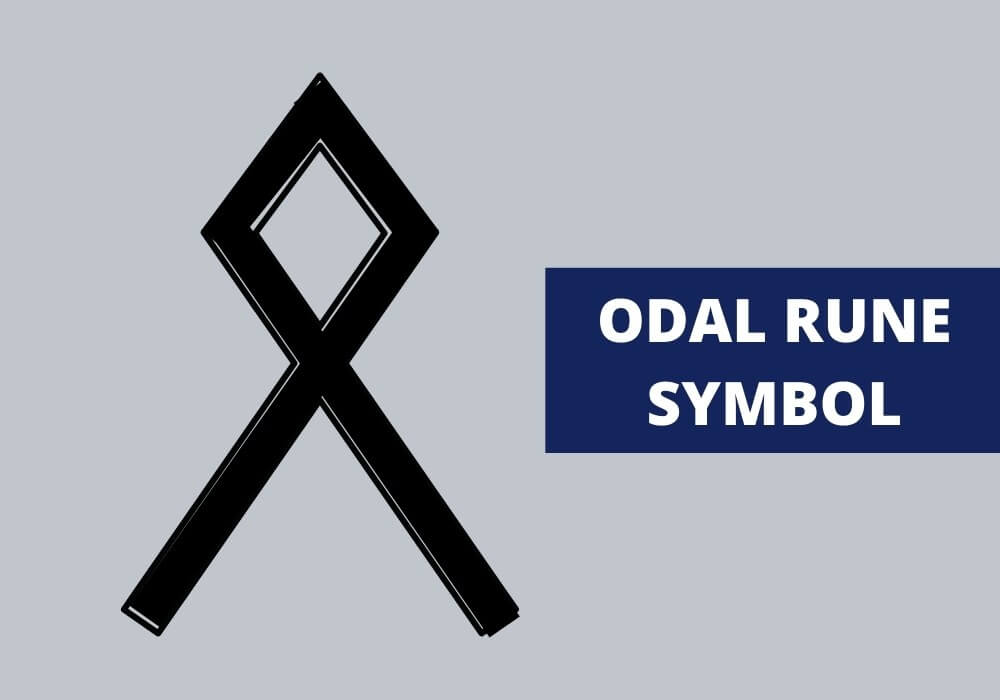
Table of Contents
The Odal, or Othala rune, is one of the oldest and most widely used runes in most ancient Norse, Germanic, and Anglo-Saxon cultures. In the Elder Futhark (i.e. the oldest form of the runic alphabets), it was used to represent the “o” sound. Visually, the Odal rune was shaped like an angular letter O with two legs or ribbons coming from either side of the lower half.
Symbolism of the Odal Rune (Othala)
The symbol generally represents inheritance, tradition and persistence. It also symbolizes unity and the connection to family.
When reversed, it represented the negative concepts of loneliness, division, separation or rebellion.
The symbol also represented the words – heritage, inherited estate, and inheritance. It’s meaning as inheritance stems from the old Germanic words ōþala– or ōþila– and their many variants such as ēþel, aþal, aþala, and others.
The variations apal and apala also have the approximate meanings of:
- Nobility
- Lineage
- Noble race
- Kind
- Noblemen
- Royalty
There’s also the somewhat debated connection between Ol and Adel in Old High German, which also means:
- Nobility
- Noble family line
- A group of superior social status
- Aristocracy
Both as a rune and as the representation of the sound “O”, the Odal rune has been seen in historic artifacts dating as far back as 3rd century AD.
The Odal Rune as A Nazi Symbol
Unfortunately, the Odal rune was one of the many symbols co-opted by the Nazi party of WWII Germany. Because of the symbol’s meaning of “nobility”, “superior race”, and “aristocracy”, it was used as the emblem of ethnic German military and Nazi organizations. What’s distinct about these uses is that they often depicted the Odal rune with additional feet or wings below it.
In this variant, it was the emblem of:
- The 7th SS Volunteer Mountain Division Prinz Eugen
- The 23rd SS Volunteer Panzer Grenadier Division Nederland, which added an arrowhead at the “feet” of the rune
- The Nazi-sponsored Independent State of Croatia.
It was also later used by the Neo-Nazi Wiking-Jugend in Germany, the Anglo-Afrikaner Bond, the Boeremag, the Blanke Bevrydingsbeweging in South Africa, the National Vanguard in the Neo-Fascist group in Italy, and others.
Because of such unfortunate uses, the Odal rune is now often considered a hate symbol. It’s featured in the Strafgesetzbuch section 86a of the German criminal code as an outlawed symbol along with the Swastika and many others.
The Odal Rune’s Non-Nazi Modern Use
What remedies the Odal rune’s fall from grace is the fact that all these Nazi, Neo-Nazi, and Neo-Fascist uses of the rune depict it with the “feet” or “wings” below it. This means that the original Odal rune which lacks these additions can still be viewed as more than just a hate symbol.
And, indeed, the Odal rune has been used in a lot of modern literary works. For example, it was depicted as a protection rune in the Shadowhunters books and film series of Cassandra Clarke, as an “inheritance” symbol in the Magnus Chase and the Gods of Asgard series by Rick Riordan, as an emblem in the Sleepy Hollow TV show, as an emblem of the Othala villain in the Worm web serial, and others. The term Odal has also been used as a title of multiple songs such as a song in Agalloch’s second album The Mantle, a track in Wardruna’s album Runaljod – Ragnarok, and others.
Still, using the Odal rune should be done with caution, especially if it has the signature “feet” or “wings” beneath it.
Wrapping Up
As an ancient Norse symbol, the Odal rune still carries weight and symbolism when used. However, because of the tainting it suffered at the hands of the Nazis and other extremist groups that use it as a hate symbol, the Odal rune symbol has acquired controversy. However, in its original form, it’s still viewed as an important Norse symbol.








